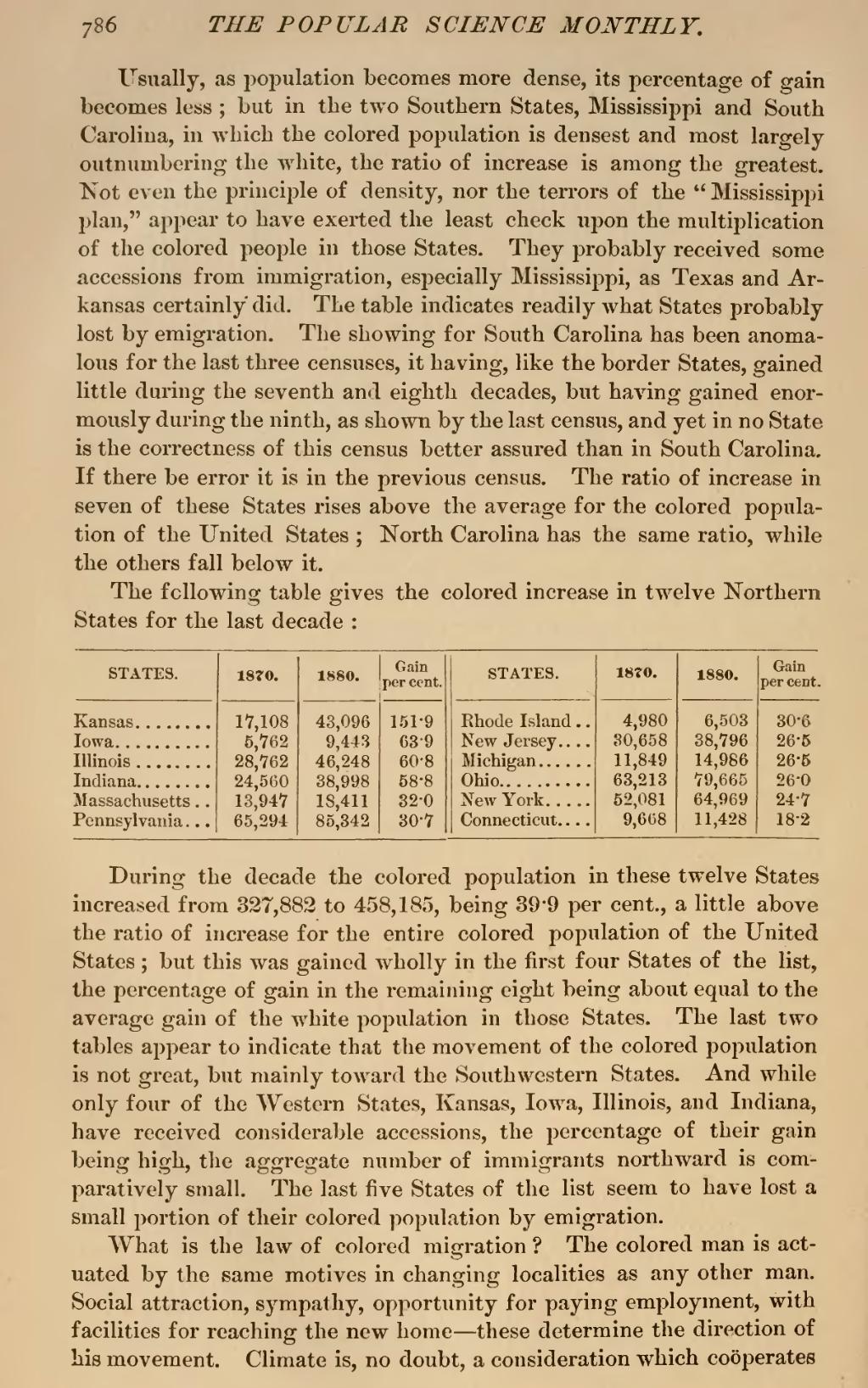Usually, as population becomes more dense, its percentage of gain becomes less; but in the two Southern States, Mississippi and South Carolina, in which the colored population is densest and most largely outnumbering the white, the ratio of increase is among the greatest. Not even the principle of density, nor the terrors of the "Mississippi plan," appear to have exerted the least check upon the multiplication of the colored people in those States. They probably received some accessions from immigration, especially Mississippi, as Texas and Arkansas certainly did. The table indicates readily what States probably lost by emigration. The showing for South Carolina has been anomalous for the last three censuses, it having, like the border States, gained little during the seventh and eighth decades, but having gained enormously during the ninth, as shown by the last census, and yet in no State is the correctness of this census better assured than in South Carolina. If there be error it is in the previous census. The ratio of increase in seven of these States rises above the average for the colored population of the United States; North Carolina has the same ratio, while the others fall below it.
The following table gives the colored increase in twelve Northern States for the last decade:
| STATES. | 1860. | 1870. | Gain per cent. |
STATES | 1860. | 1870. | Gain per cent. |
| Kansas | 17,108 | 43,096 | 151·9 | Rhode Island | 4,980 | 6,503 | 30·6 |
| Iowa | 5,762 | 9,443 | 639 | New Jersey | 30,658 | 38,796 | 265 |
| Illinois | 28,762 | 46,248 | 60·8 | Michigan | 11,849 | 14,986 | 26·5 |
| Indiana | 24,560 | 38,998 | 58·8 | Ohio | 63,213 | 79,665 | 26·0 |
| Massachusetts | 13,947 | 18,411 | 32·0 | New York | 52,081 | 64,969 | 24·7 |
| Pennsylvania | 65,294 | 85,342 | 30·7 | Connecticut | 9,668 | 11,428 | 18·2 |
During the decade the colored population in these twelve States increased from 327,882 to 458,185, being 39·9 per cent., a little above the ratio of increase for the entire colored population of the United States; but this was gained wholly in the first four States of the list, the percentage of gain in the remaining eight being about equal to the average gain of the white population in those States. The last two tables appear to indicate that the movement of the colored population is not great, but mainly toward the Southwestern States. And while only four of the Western States, Kansas, Iowa, Illinois, and Indiana, have received considerable accessions, the percentage of their gain being high, the aggregate number of immigrants northward is comparatively small. The last five States of the list seem to have lost a small portion of their colored population by emigration.
What is the law of colored migration? The colored man is actuated by the same motives in changing localities as any other man. Social attraction, sympathy, opportunity for paying employment, with facilities for reaching the new home—these determine the direction of his movement. Climate is, no doubt, a consideration which coöperates
